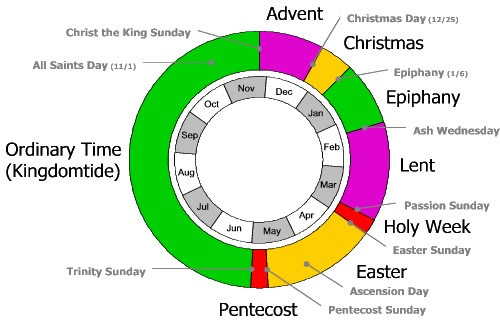If you think the convoluted story about the Stone of Herb cannot get any weirder, read on:
This prophecy is dated: It is specifically about going to the place of safety with the new throne of David. We had to break away from the lukewarm Worldwide Church of God. God is focusing our minds on the place of safety, and also on conducting ourselves like King David did.
This prophecy shows not just a leader going to that place, but all of God’s faithful people going there together. Daniel 12:8-11 paint a similar picture. We are all in this together; we leave together and are taken to a place of safety together. It says, “And from the time that the daily [the Work of God] shall be taken away, and the abomination that maketh desolate set up, there shall be a thousand two hundred and ninety days.” Subtracting the 1,260 days we are in the place of safety from this 1,290 days indicates we have 30 days to get to a place of safety, and all of us go together."We are all in this together; we leave together..." Of all of the splinter groups of Armstrongism, the Philadelphia Church of God and the Restored Church of God are the two groups that have the potential to lead their followers into some kind of death scenario. Their members blindly follow ANYTHING their leaders say as god delivered fact.
And notice verse 10: “Many shall be purified, and made white, and tried.” God wants us to be purified. I think that has a lot to do with us having the new throne of David. God wants a purified throne and a pure people when He arrives! Verses 12-13 talk about the wonderful ending of all this: It is leading right into the Second Coming of Jesus Christ, when He receives the throne of David!
Amos 7 tells us when we go to the place of safety. There you see a priest, Amaziah, telling the king, Jeroboam, about God’s prophet. There is a confrontation, and the priest does the dirty work. He tells God’s prophet, “O thou seer, go, flee thee away into the land of Judah, and there eat bread, and prophesy there” (verse 12). This is spiritual Antiochus—Satan incarnate!
All indications are that this is how the nobility of Israel will go: We will be outcasts, sent to a cave! But we have the very throne of David! We don’t look to things or to people—we look to God! It doesn’t matter where we go as long as God is directing us!Flurry, admits to his faithful that no where in the Bible is it mentioned that Jeremiah took a stone to Ireland. Nowhere. What the Philadelphia Church of God does claim is that Herbert Armstrong PROVED that Jeremiah took the stone to Ireland along with the Ark of the Covenant and David's harp. Herbert did no such that.
In its account of the history of Jeremiah rescuing Zedekiah’s daughter to transplant the throne, the Bible never mentions him taking a stone. We know he did because it is a symbol of David’s throne. Jeremiah had to have the coronation stone—after all, he was taking the throne of David to Ireland! Mr. Armstrong proved from Irish history that when Jeremiah came to Ireland with Tea-Tephi, he had an ark, David’s harp and a stone called lia-fail.But these last three items were not mentioned in the book of Jeremiah when it discusses the king’s daughters. The same is true in Micah: It mentions a king but doesn’t say anything about the stone. As with Jeremiah, that is covered elsewhere. But we need the symbol of David’s throne, and we need somebody to rule from it!The PCG idolatry grows more each day. Just how can a person "spiritually nurture" an inanimate object in "every way possible?" The church has always mocked Catholics for revering statues, and Flurry is doing the exact same thing he mocks.



